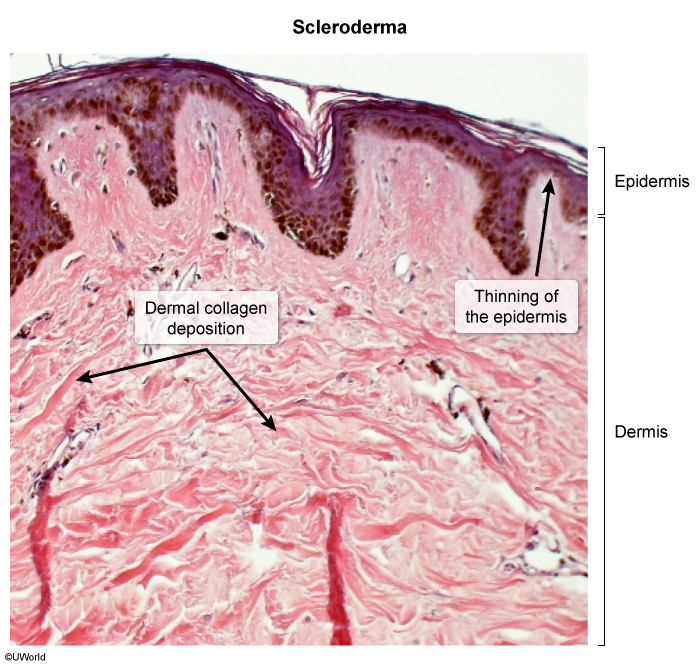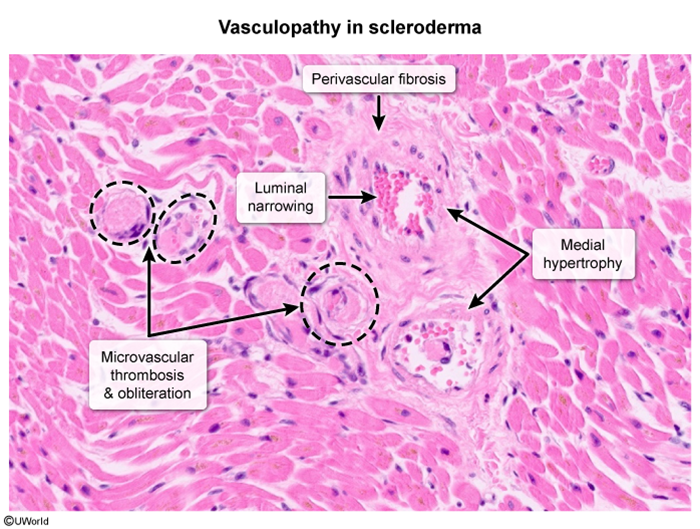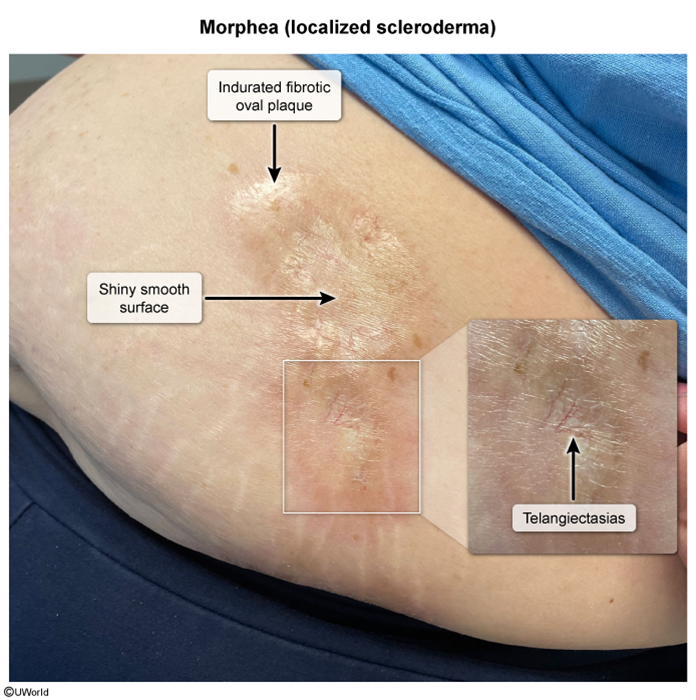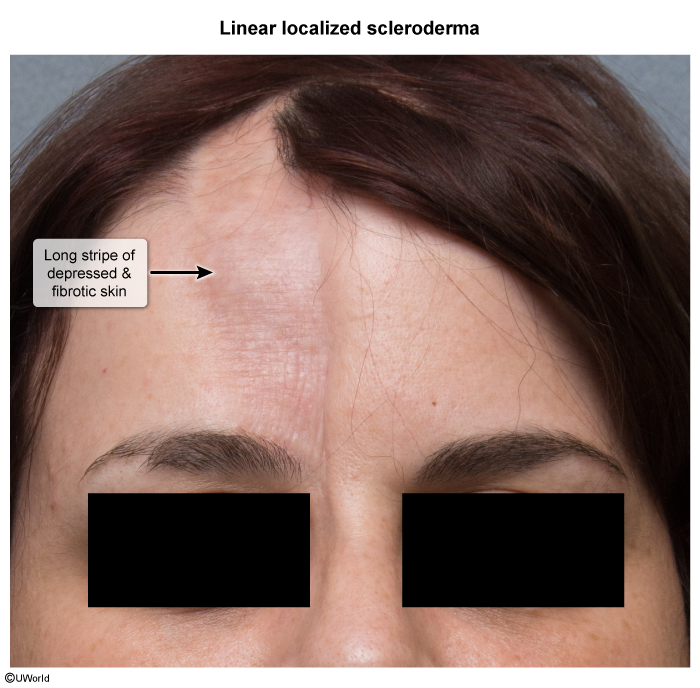Scleroderma And CREST Syndrome
Article Sections
Introduction
Scleroderma is a family of autoimmune connective tissue disorders characterized by an obliterative vasculopathy leading to fibrosis of the skin and internal organs. It carries high morbidity and mortality due to involvement of the lungs, kidneys, heart, and gastrointestinal tract.
Pathogenesis
Scleroderma is thought to arise from the interplay of vasculopathy, autoimmunity, and fibrogenesis (Figure 1).
VasculopathyThe initial events in scleroderma are thought to begin in the small vessels. Microvascular injuries may be related to antiendothelial antibodies, upregulated cell adhesion molecules (eg, ICAM-1), and altered balance of vasoconstrictors versus vasodilators (eg, high endothelin, low nitric oxide). These changes may contribute to patients having increased vasospasticity of digital arteries (eg, Raynaud phenomenon) and pulmonary arteries. Vessel lumens are narrowed due to neointimal hyperplasia, smooth muscle hypertrophy, and concentric "onion skin" fibrosis.
Continue Learning with UWorld
Get the full Scleroderma And CREST Syndrome article plus rich visuals, real-world cases, and in-depth insights from medical experts, all available through the UWorld Medical Library.
Figures
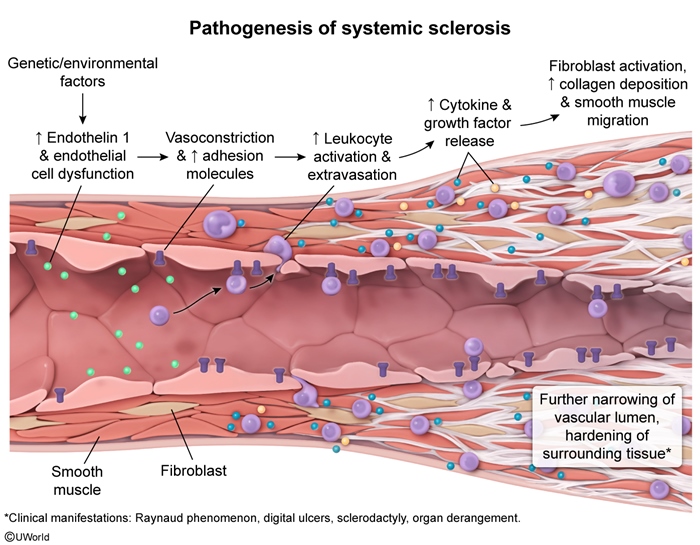
Images
